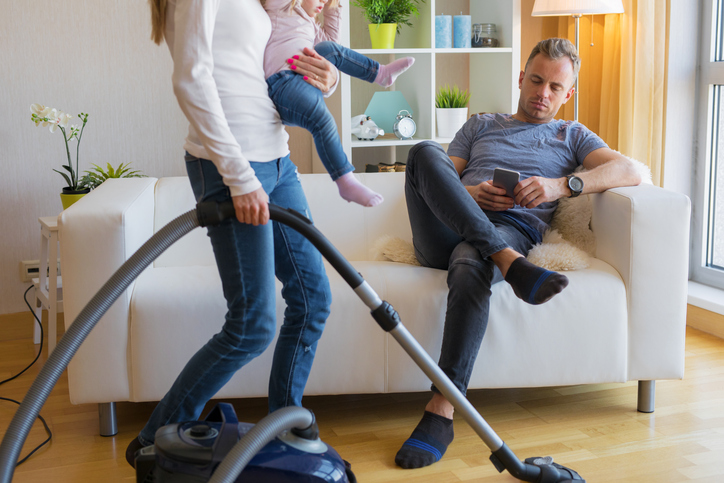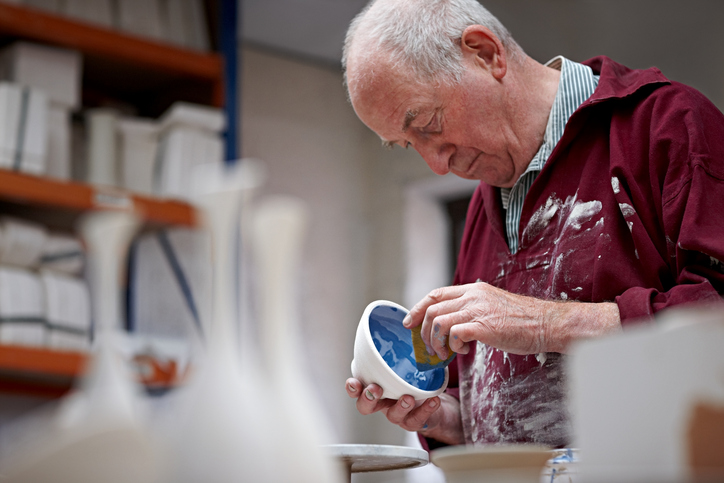 People with codependency often put everyone else’s needs above their own. As a result, they can develop feelings of resentment and emptiness. They may also find themselves in toxic relationships. Therapy can help a person develop healthier ways of interacting with others.
People with codependency often put everyone else’s needs above their own. As a result, they can develop feelings of resentment and emptiness. They may also find themselves in toxic relationships. Therapy can help a person develop healthier ways of interacting with others.
Erica Holtz, a Huntingdon Valley, Pennsylvania marriage and family therapist, says, “Codependency can be difficult to change alone as codependent behaviors are often learned early on and reinforced over many years. Resolving codependency can improve relationships, decrease depression and anxiety, and improve self-esteem.”
- Therapy for Codependency
- Learning to Say No
- Supporting vs. Saving
- Self-Care for Codependent People
- Case Example of Therapy for Codependency
Therapy for Codependency
A therapist can help a person identify codependent tendencies. In therapy, a person can learn to recognize and accept emotions they may have repressed. A therapist can also help them understand why codependent patterns developed in their past and how these patterns have transferred to other relationships.
People with codependency often have low self-esteem and perfectionist tendencies. Learning self-compassion is often an important part of recovery. A person in therapy may practice being kind to themselves and forgiving their own mistakes. Over time, their drive to overcompensate may lessen.
A therapist can also help people improve their relationships with others. They may teach the person how to support others without enabling bad behaviors. They might also help the person practice being assertive.
Codependent people can also benefit from meeting with peers in a group therapy or support group setting. In fact, the support group Co-Dependents Anonymous (CoDA) was developed based on the Alcoholics Anonymous 12-step model. Al-Anon, a group designed to support the family and friends of people with alcohol addiction, is also centered on helping members break their cycles of dependency.
Learning to Say No
One of the hardest things for a codependent person to do is say no. They’re so used to putting others first that they may not recognize when their own needs aren’t being met. The person may worry that a “no” will ruin the relationship.
Yet drawing healthy boundaries can in fact benefit a relationship. When people communicate clearly what they do and do not want, there is less room for misunderstandings. A “no” can also help someone prioritize their time and energy on the tasks that really matter. Over time, the codependent person may develop more energy and a better mood. These changes can improve the relationship as a whole.
Boundaries can vary depending on one’s needs. A new couple may set a limit on how frequently they text each other throughout the day. Two people about to get married may have a conversation on sharing finances. Communicating simple boundaries can improve trust and help both parties feel secure.
If you aren’t sure how to say no to a loved one, these tips may help:
- Leave no room for doubt. Saying “no” aloud often works better than hinting at it.
- Be willing to repeat yourself. If a loved one is used to you caving in, you may need to say no a few times before they realize you are serious.
- Don’t invent excuses. Lying about nonexistent obligations will likely hurt you in the long run.
- Consider passing the torch. You may try directing the person to someone who can help them better. For example, you may not have time to babysit your nephew, but your lonely aunt may jump at the chance to spend time with kids.
- Accept that you can’t please everyone. Some people don’t like to compromise. But the other person does not have to approve of your boundary for it to be valid.
Supporting vs. Saving
It’s possible to support the people in your life without feeling as if you have to save them. Support comes from encouraging and listening to people. Saving is fixing the problem before they even have a chance to solve it themselves.
There’s a certain amount of life learning that comes from fixing one’s own mistakes. If you come in and fix everything for someone, that person loses a chance to learn coping mechanisms and develop self-confidence. They may need those life skills to solve a similar problem later.
Some situations cannot be rectified with either support or saving. Being the perfect partner or family member will not fix someone’s abusive behavior. Nor will it cure their addiction. Most people need mental health treatment before they can quit abusing others. People with drug or alcohol addiction may also need rehab.
Self-Care for Codependent People
 Caretaking can be emotionally, mentally, and physically exhausting. Since codependent people give so much, it can be especially important to make time for self-care.
Caretaking can be emotionally, mentally, and physically exhausting. Since codependent people give so much, it can be especially important to make time for self-care.
Self-care can take several forms. You could nurture your body with exercise and nutritious meals. You could improve your mood by spending time with friends or doing a hobby. Any activity that brings you happiness can qualify as self-care.
As with all things, neglecting upkeep can cause breakdowns. Not taking care of yourself may lead to burnout and compassion fatigue. These states can prevent you from caring for anyone, much less the people you love the most.
At the end of the day, it is possible to care for both yourself and those around you. Self-care does not immediately negate caring for others. Make time for yourself—you’re worth it.
Case Example of Therapy for Codependency
- Codependency, therapy, and Al-Anon: Charlene, 49, experiences chronic, mild depression. She’s recently had an increase in symptoms. She identifies her live-in boyfriend as the source of her recent emotional downturn. Charlene reports that he is emotionally abusive and drinks to intoxication every day. Charlene says she knows they “love each other,” and that “the whole thing is my fault.” The therapist recognizes signs of codependency. They refer Charlene to Al-Anon, which they say helps people “dealing with an alcoholic partner.” Charlene's therapist encourages her to express her feelings and needs in therapy. The therapist helps Charlene check distorted beliefs about herself and relationships in general. They remind Charlene that her boyfriend is responsible for his own behavior. Through therapy, Charlene learns to identify codependent patterns which began in childhood. Over time, she stops trying to rescue her boyfriend from himself and leaves the abusive relationship.
References:
- Campbell-Avenell, Z. (n.d.). 49 ways to say no to anyone (when you don’t want to be a jerk). Career FAQs. Retrieved from https://www.careerfaqs.com.au/news/news-and-views/how-to-say-no-to-anyone
- Setting Boundaries with Difficult People. (n.d.) Purdue University Fort Wayne. Retrieved from https://www.pfw.edu/affiliates/assistance/selfhelp/relationship-settingboundaries.html
- Springer, C. A., Britt, T. W., & Schlenker, B. R. (1998). Codependency: Clarifying the construct. Journal of Mental Health Counseling, 20(2), 141-158. Retrieved from http://search.proquest.com/docview/198715631?accountid=1229
- Wells, M., Glickauf-Hughes, C., & Jones, R. (1999). Codependency: A grass roots construct's relationship to shame-proneness, low self-esteem, and childhood parentification. The American Journal of Family Therapy, 27(1), 63-71. Retrieved from http://search.proquest.com/docview/230100367?accountid=1229

